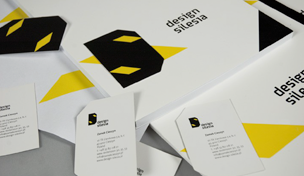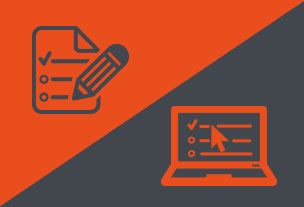Want full & instant access to shape?
To access the full benefits of shape you need to register for FREE
 Register NowAlready registered? Log in here
Register NowAlready registered? Log in here

Welcome to the Shape online resource. This is a quick guide to the features and unique navigation of Shape
Show me how to use Shape SkipWant full & instant access to shape?
To access the full benefits of shape you need to register for FREE
 Register NowAlready registered? Log in here
Register NowAlready registered? Log in here
Test
The TEST stage outlines how different forms of prototyping can be used to gather information on strengths and areas for improvement, as well as processing, refining, and re-testing the solution using feedback from users and other stakeholders until the success indicators are met. This is the last stage before the solution is signed off for implementation so it emphasizes reviewing all the insights gathered throughout the process before establishing a final proof of concept.
Trial
- How does testing with prototypes work?
- Examples of different prototype tests
Introduction
Analyse whether you or your supplier is best equipped to take the lead on:
- Testing the concept
- Will this be carried out independently or with support from the other party?
A prototype is a representation of all or part of your solution in order to test and validate that it is working towards the success criteria specified in the Identify stage. For more detail, see the Prototyping step of the Create stage.
At this point your prototype does not need to be a full-scale solution; it can consist of elements that need to be tested separately against your specifications or existing standards/regulations. A prototype can take almost any form or shape, from scale drawings to full size models, paper sketches, digital or on-screen images through to role-playing transactions, or any appropriate combination.
You can expect to make modifications to improve the user experience at this stage; testing with your identified stakeholders (see the Stakeholders step of the Identify stage) is vital for communication, knowledge and confirmation of the concept.
How does testing with prototypes work?
Prototyping is a valuable opportunity to identify and improve shortcomings or weaknesses as early as possible.
You need a clearly defined purpose for prototyping each element of your solution, and a mechanism to capture all relevant information gathered during the process. This provides structure and focus for the Refine step of the Test stage.
Testing at this stage is usually focussed on aspects such as:
- Ensuring each individual operation or feature works as intended
- Understanding limitations of materials or situations
- Demonstrating what the solution will look, work or feel like
- Researching what the users understanding and response is
Prototypes are about testing and learning. Therefore they often fail, break or don’t perform as defined in the overall task because they are not the finished article. However, a prototype only truly fails if nothing new is learned from its construction and testing.
Examples of different prototype tests
Different prototype tests might focus on:
Physical objects: Durability – ensuring that your technologies or materials are strong enough to consistently and safely function through the anticipated lifespan of the object.
Services or their physical environments: Traffic patterns, space for foreseeable numbers of users, wheelchair accessibility, counter heights, legibility of signs or screens, or a number of transactions over a set timescale.
Visual communications and graphic design: Legibility, layout, flow of operations such as filling out a form. User understanding of the task required.
On-screen solutions: Deciding whether the prototype will be a clickable web structure, a purely visual representation or a combination of the two.
In general, testing should be planned and appropriate for:
- Functions/activities defined in the outcomes and project brief
- Identified stakeholders and users
- Potential providers/manufacturers of the service or product
- Regulations that govern its use
- Materials/technologies/processes that deliver the physical form
Refine
In this step we will cover:
When to refine the design
What are aesthetics?
How to approach aesthetic decisions
Introduction
Usually the party responsible for the ideas and concepts will carry out this step, but consider whether you or your supplier is best equipped to take the lead on refining the solution.
Also, whether the other party should support the process and, if so, how.
When to refine the design
Refinement is how you make minor alterations and improvements based on your observations from the first round of testing and validation of your prototype.
The look and feel of a solution can only properly be determined after you have understood the needs of the user and tested the functionality of your solution.
What are aesthetics?
Aesthetics is about the entire experience of the senses. This can be anything that you perceive from the solution, including:
- Look
- Feel
- Sound
- Temperature
- Smell
- Texture
- Light
This might seem like a luxurious concern, but aesthetics are proven to be an extremely important element of successful and effective services, environments or communications.
For a service: Whether the service is digital or face-to-face, aesthetics are an emotional experience linked to the users’ perception of being respected and accommodated in all aspects of the service.
For a service environment, aesthetics are often dependent on the space itself:
- The balance between natural and artificial light
- The choice of materials and colours
- Air quality and temperature
- How noisy or quiet the space is – is it easy to communicate with others?
- The environment is attractive to the users, non threatening and welcoming
For graphic design and visual communication, aesthetics are linked with:
- Overall size – is it a pocket guide, poster or billboard
- Choice of layout – based on information hierarchy, anticipated time spent reading etc
- Use of colours
- Typefaces – legibility is greatly improved by the correct choice of typefaces especially across different languages and in print/on-screen options
- Images – photographs, illustrations, info graphics – a picture paint a thousand words but is open to interpretation by the viewer
Function and purpose is central to aesthetics in visual communication design. E.g. If a website is difficult to view or use, it can create a sense of incompetence or cause the user to give up.
Example: The link between aesthetics and performance
Research has demonstrated clear correlations between:
- The aesthetic qualities of a hospital ward and the speed of recovery (The Center for Health Design, 2004)
- The feel of comfort in police interrogation rooms and the quality of information recorded by the police (John E. Reid and Associates, 2010)
How to approach aesthetic decisions
Aesthetics are often perceived as a matter of taste, but when designing for large and varied user-groups, your aesthetic choices need to connect with as many users as possible without losing identity or appeal.
Your solution should be appropriate to the expectations, sophistication and/or maturity of your primary user groups.
Variations in user groups can include factors such as:
- Age
- Socio-economic backgrounds
- Ethnicity
References
- The Center for Health Design. Role Of The Physical Environment In The Hospital Of The 21St Century. Last modified 2004. http://www.healthdesign.org/chd/research/role-physical-environment-hospital-21st-century
- John E. Reid Associates. Designing an Interview/Interrogation Room. Last modified April 2010. http://reid.com/educational_info/r_tips.html?serial=126762771897994&print=%5Bprint%5D
Evaluate
In this step we will cover:
How many rounds of testing?
How to evaluate your testing
Introduction
Usually the party responsible for the ideas and concepts will carry out this step, but consider whether you or your supplier is best equipped to take the lead on evaluating the solution.
Also, whether the other party should support the process and, if so, how.
Don’t underestimate the importance of repeatedly testing and assessing the function, look construction and feel of your solution as you make changes, increase your understanding of the user, or context, and learn new things about the materials or technologies.
Remember – changes made to your proposed solution at this stage will be at a fraction of the cost of altering them after the launch.
How many rounds of testing?
The test procedures and level of perfection you can reach varies between solutions; the more complex the solution, the more extensive the testing should be. It is important that the solution is as perfected as it can be before it leaves the creative phase and enters the implementation phase.
Shape outlines two rounds of testing and validation. If there are few, or no, changes to your prototype, one round of testing could be enough. In development cycles that are more complex or have contradictory test results you might need several rounds of testing, adjustment and refinement.
How to evaluate your testing
Some solutions, such as web-based services, are fairly easy to continuously improve over time. Others, such as machinery, buildings, infrastructure or hardware, are difficult to change without incurring large costs once they have left the design process.
Your solution is nearing the end of its development cycle, so this is your last chance to make final refinements and evaluations before signing off on the designed solution.
If your first round of testing and validation led to noticeable alterations, additional rounds of testing are a chance to validate that they have solved the problem in the most viable and efficient way.
Sign-off
In this step we will cover:
Assessment
Proof of concept
Sign-off
Introduction
This stage is about internal decision makers. The goal is to present an overview of your process and chosen solution to the decision makers so that they can sign-off the design for implementation phase in the Apply stage.
Assessment
In many cases the decision to move on to the implementation phase is made by a pool of people:
- Some who have been part of the creative process
- Some who were only involved the early phases (e.g. deciding to address the challenge, granting a budget)
- Some who have been involved in decision-making throughout, but not in the creative process
Therefore, the solution needs to be presented and assessed for:
- Its ability to solve the problem/challenge
- The cost of implementation
- The time it will take to implement
- Potential consequences to other services/communications
This assessment will be of value to the decision maker(s) who are signing-off on the final solution, along with your test results and documentation of how they were fed into the final stages of development and improvement.
Proof of concept
The proof of concept is validation that the final solution corresponds with the original concept as described in the Create stage.
If the solution is a response to the objectives described in the Identify stage, proof of concept is confirmation that the solution solves the right problem within the restrictions defined in the initial stages of the process.
It is a good idea to produce a report of the assessment results and data. But depending on the size and significance of the project, and the decision-making processes in your organisation, you can also hold a roundtable discussion or more informal presentation. Most importantly, you must collate and transfer all relevant documentation to the person/people who are authorised to sign off the solution.
Sign Off
Sign-off at this stage means that the creative process is complete for now and the design process you have managed is ready to be developed into a workable solution.
Sign-off can also mean that the solution is ready to be brought forward to suppliers or others involved in applying or materialising the solution. Such implementation might mean:
- Building and furnishing a space
- Developing a beta-version of a website
- Printing posters
- Introducing a service in its proper environment
Case Study 

Project Title
Service Design for Local Areas
Client
Design Silesia, Silesia, Poland
Design Suppliers
PDR, Cardiff Metropolitan University, UK
Launch Date
Unknown
Design Silesia, the design centre that supports and promotes the design industry in Silesia undertook a project for the application of service design in the public sector. A team from PDR centre in Cardiff was invited to establish a framework, process and set of tools to use with public bodies for Polish designers. After an intensive workshop, the designers from Poland acquired the skills and experience to deliver their own project in Silesia.
View all Case Studies and ToolsRead More






